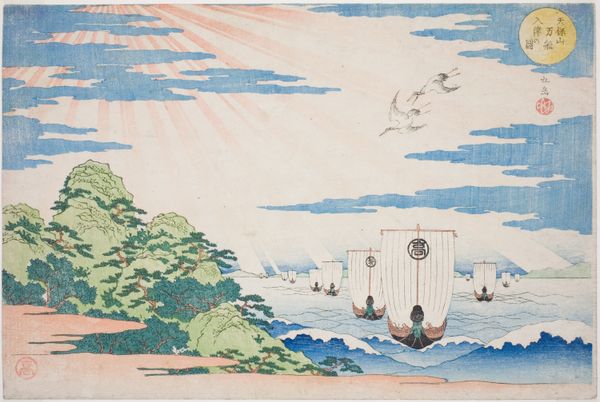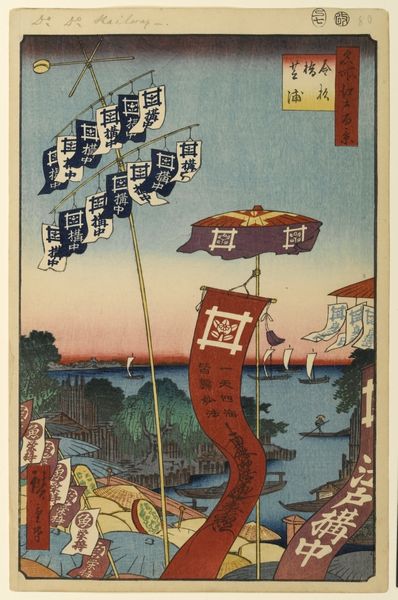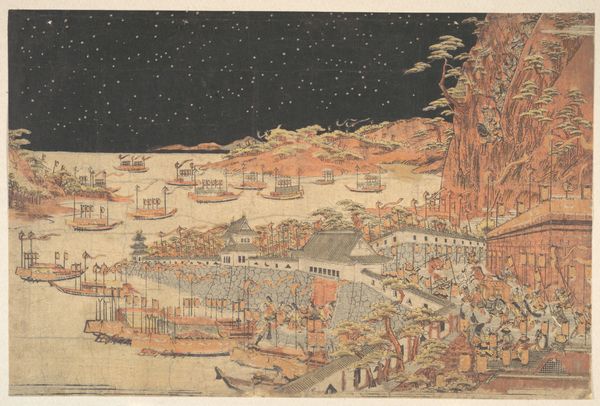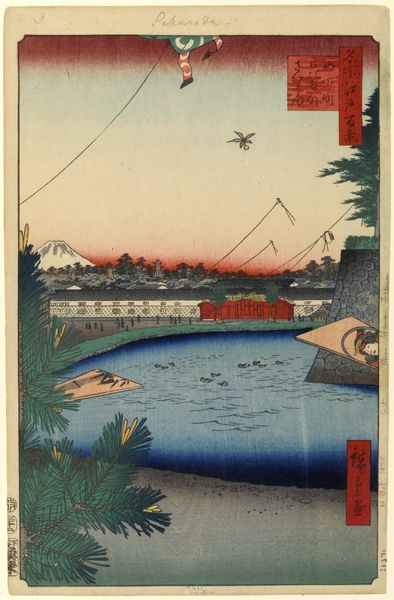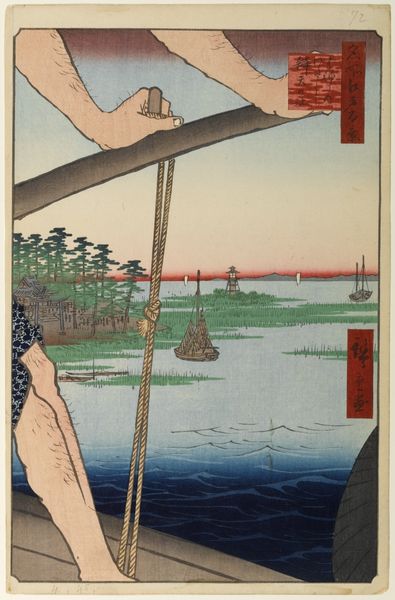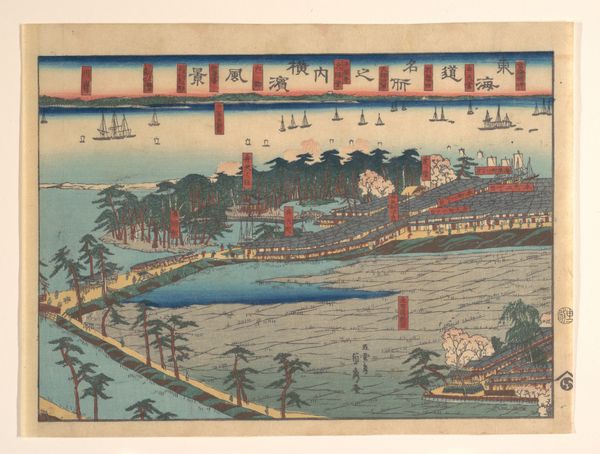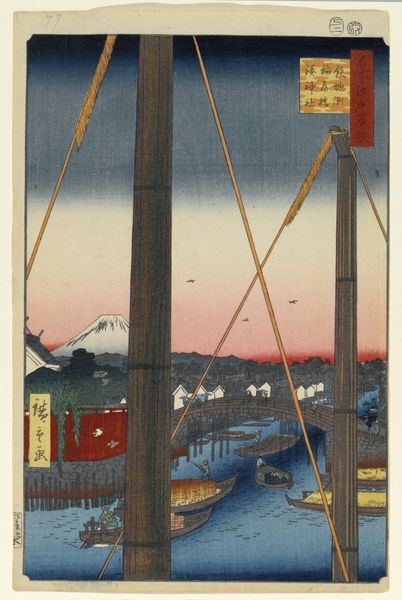
Dimensions: H. 10 1/16 in. (25.6 cm); W. 14 15/16 in. (37.9 cm)
Copyright: Public Domain
Curator: Welcome. Today we are looking at “Tempozan Man-sen Nu-shin no Zu,” a woodblock print created in 1838 by Yashima Gakutei. It’s a stunning example of ukiyo-e landscape, currently residing here at The Met. Editor: My immediate reaction is awe at the radiance of it all. Those beams of light are just incredibly striking! There is something about that geometric presentation which I love. It reminds me of divine intervention—or at least the powerful forces that influence human affairs. Curator: Absolutely. Gakutei was working within a specific cultural context where images were deeply tied to social status and economic change. The subject here is Tempozan, a man-made mountain built near Osaka as a landmark and a place for leisure. The print itself functioned as a kind of advertisement, enticing people to visit. Editor: I see, a promotional tool cleverly disguised as art! The inclusion of the boats, presumably packed with tourists, adds to that reading. And even the divine-like sunbeams play into selling the experience—suggesting perhaps that Tempozan is blessed or divinely ordained for enjoyment? Is this what they meant by “Yamato-e?” Curator: That’s a perceptive interpretation. Yamato-e, typically focused on Japanese themes, served to bolster a specific cultural identity and could easily be used to highlight uniquely pleasurable spaces such as Tempozan. You could see its potential for projecting imperial authority via landscape. The commercial angle complicates our view of purely artistic intentions. Editor: It’s fascinating how these prints capture not only the visual scene but also the subtle power dynamics and economic undercurrents of their time. Seeing the scene presented in this geometric fashion almost underscores the way these commercial intentions are built into every aspect of life. Even what seems natural, such as those rays of light, appear man-made. It speaks volumes. Curator: Indeed. Examining "Tempozan Man-sen Nu-shin no Zu" reminds us that art is never created in a vacuum. Editor: A great point to bear in mind. This image highlights how the simplest art holds the capacity to weave tales about the world it inhabited, should we be willing to listen.
Comments
No comments
Be the first to comment and join the conversation on the ultimate creative platform.
